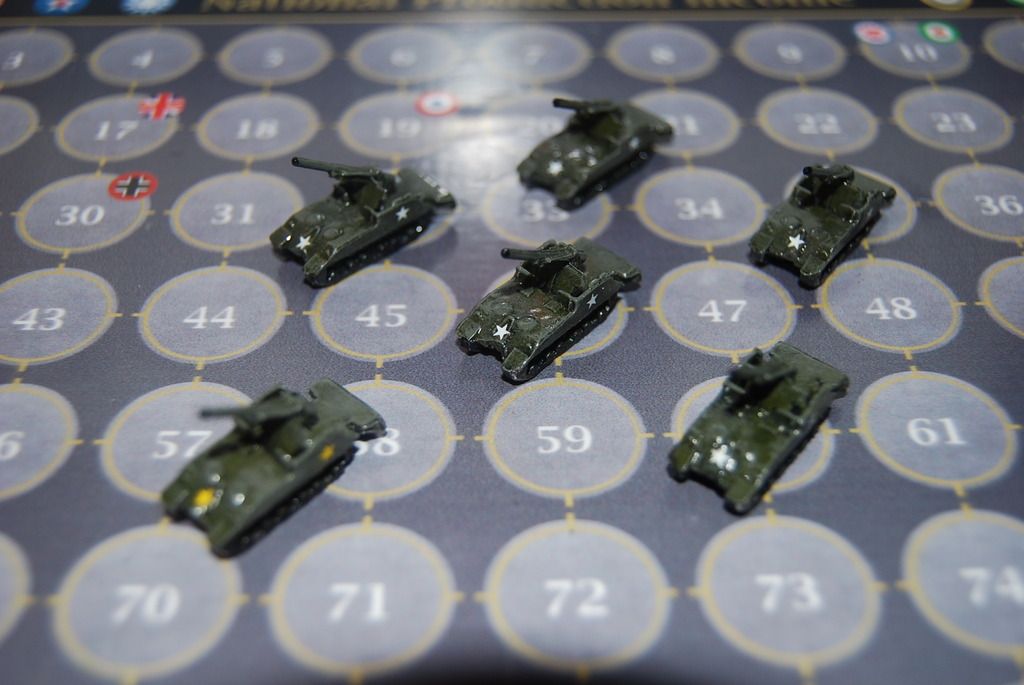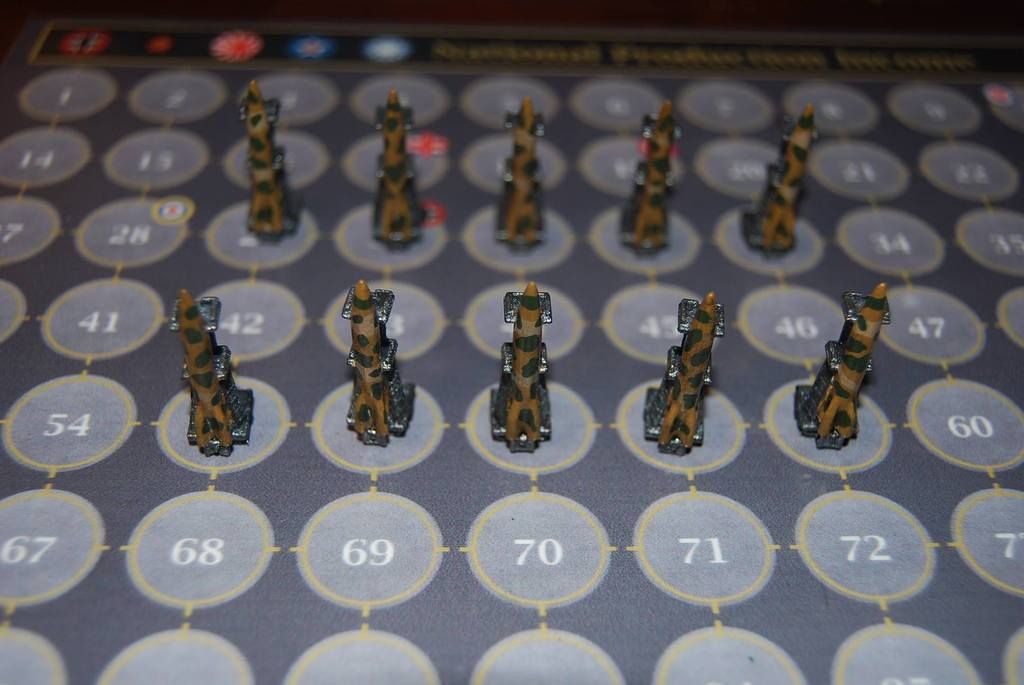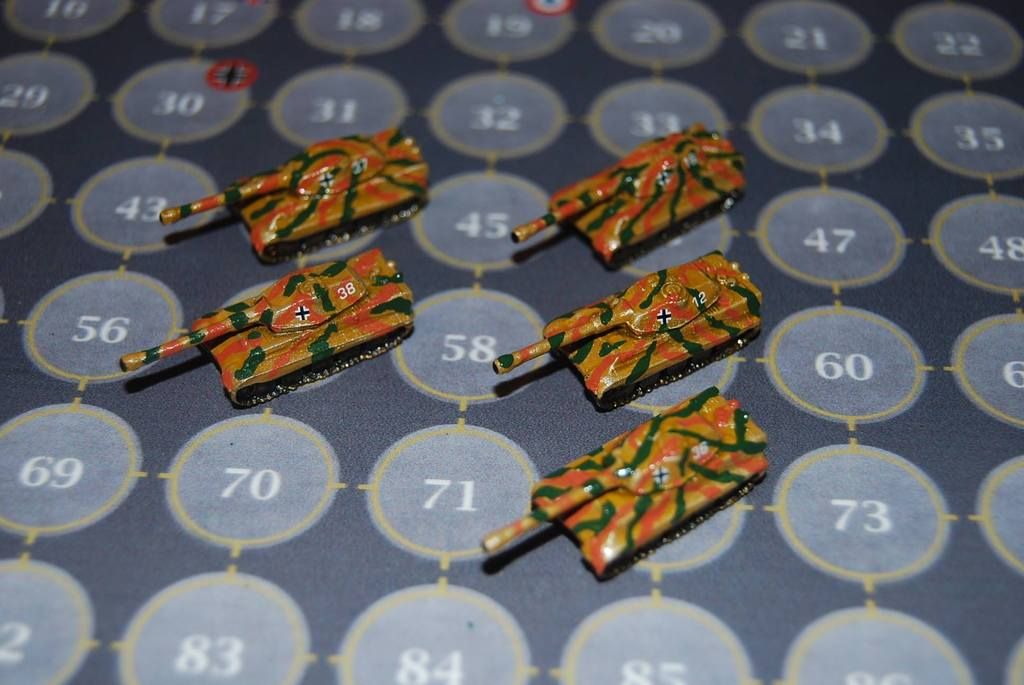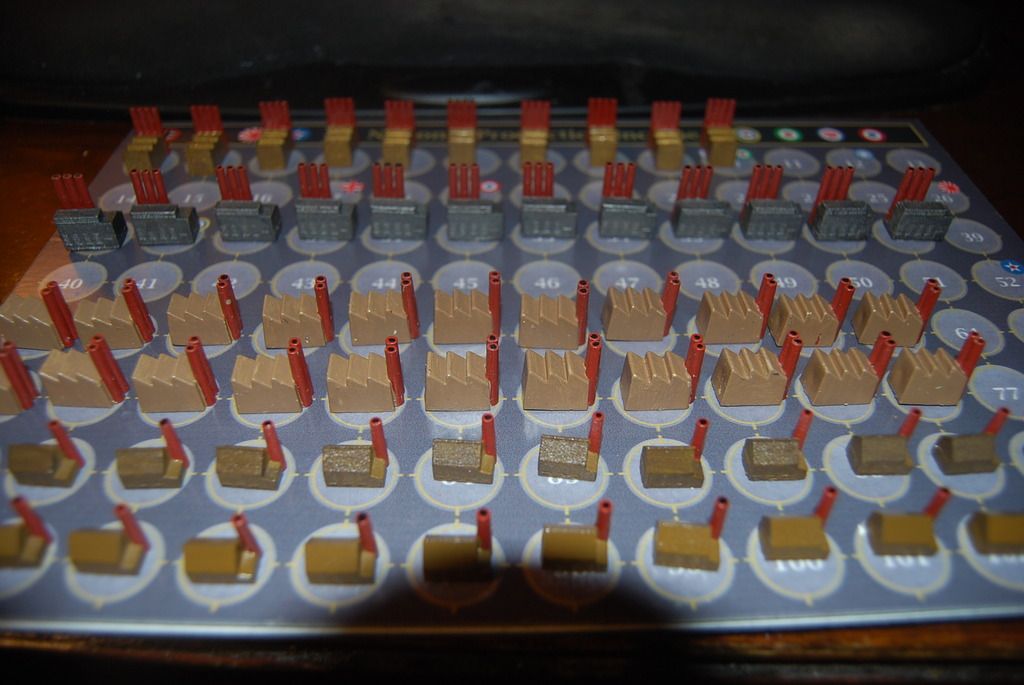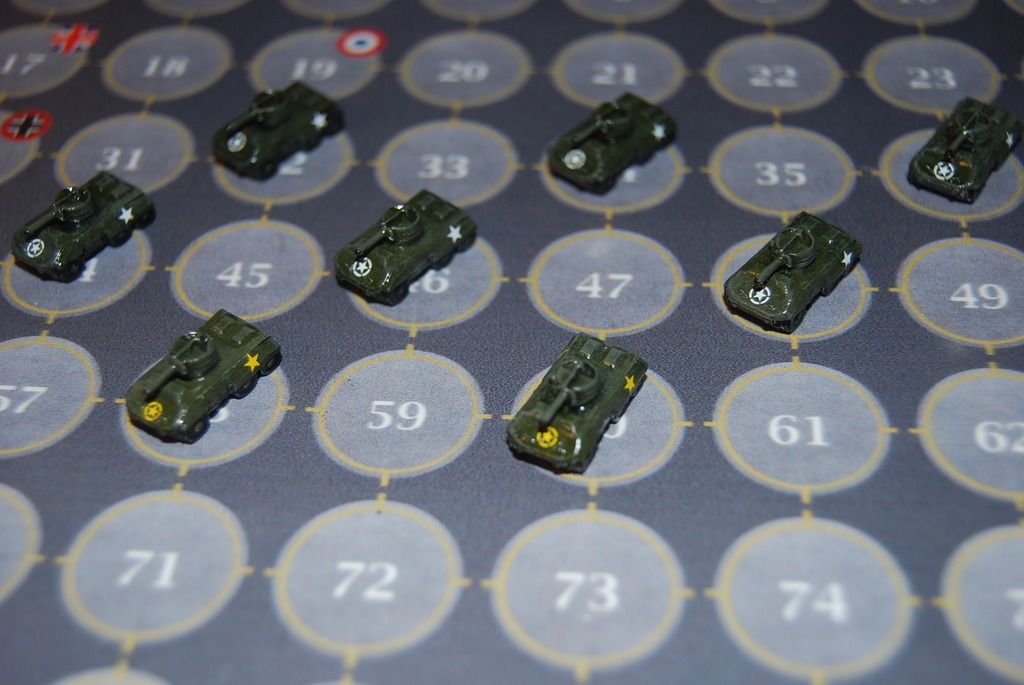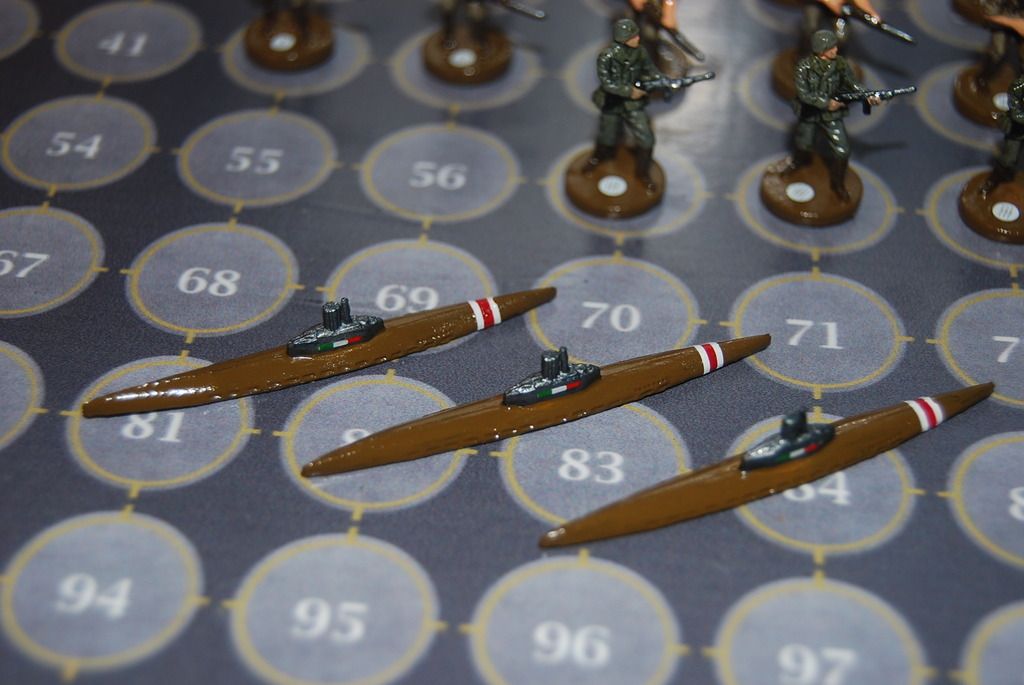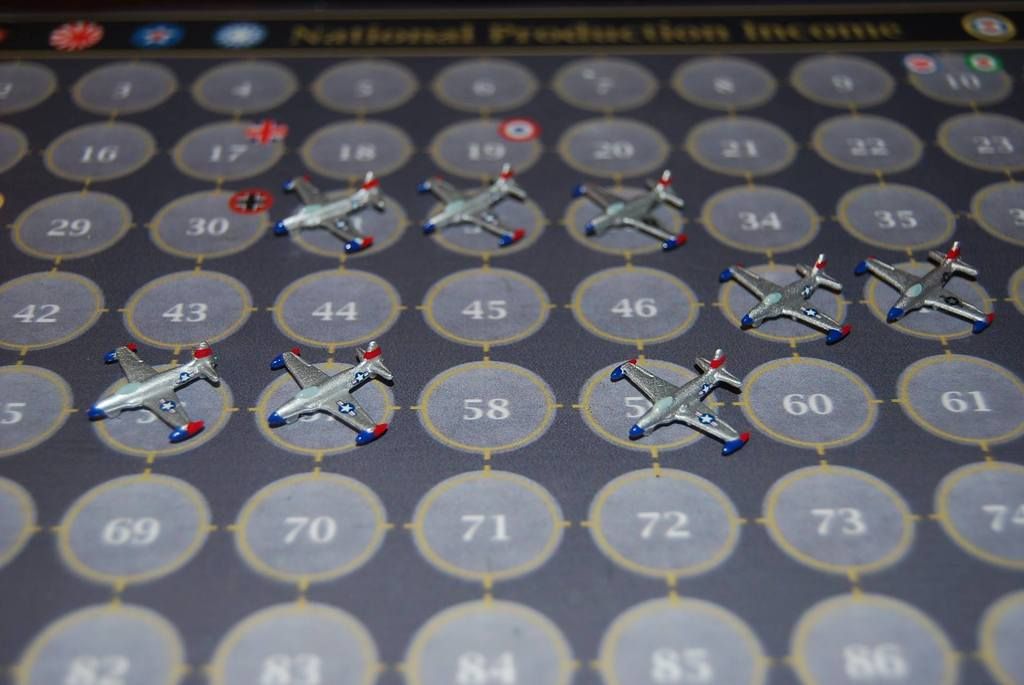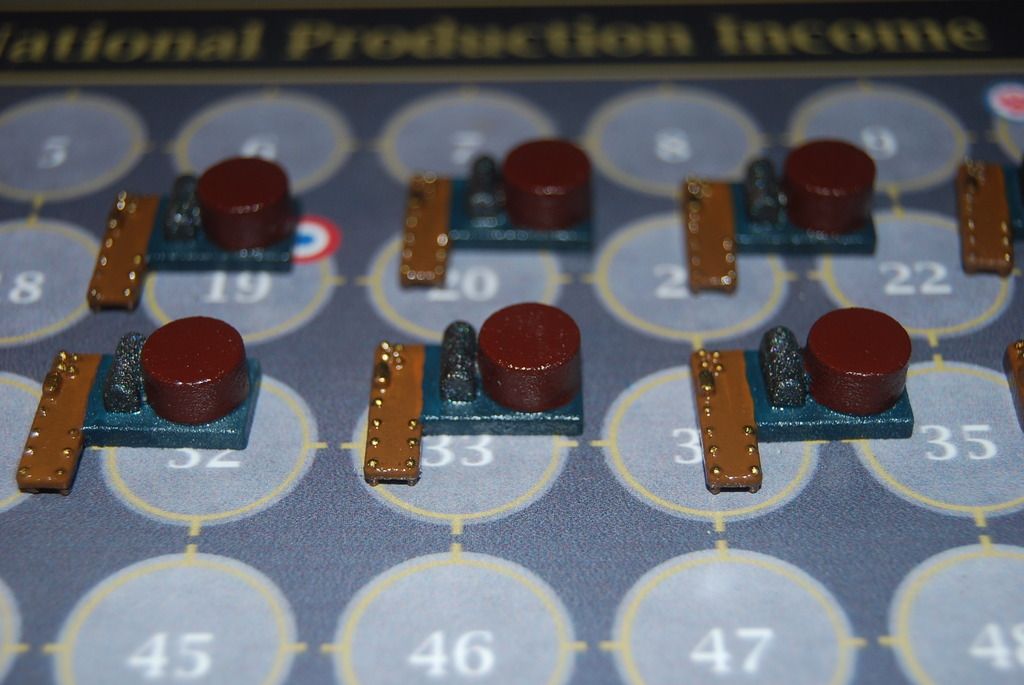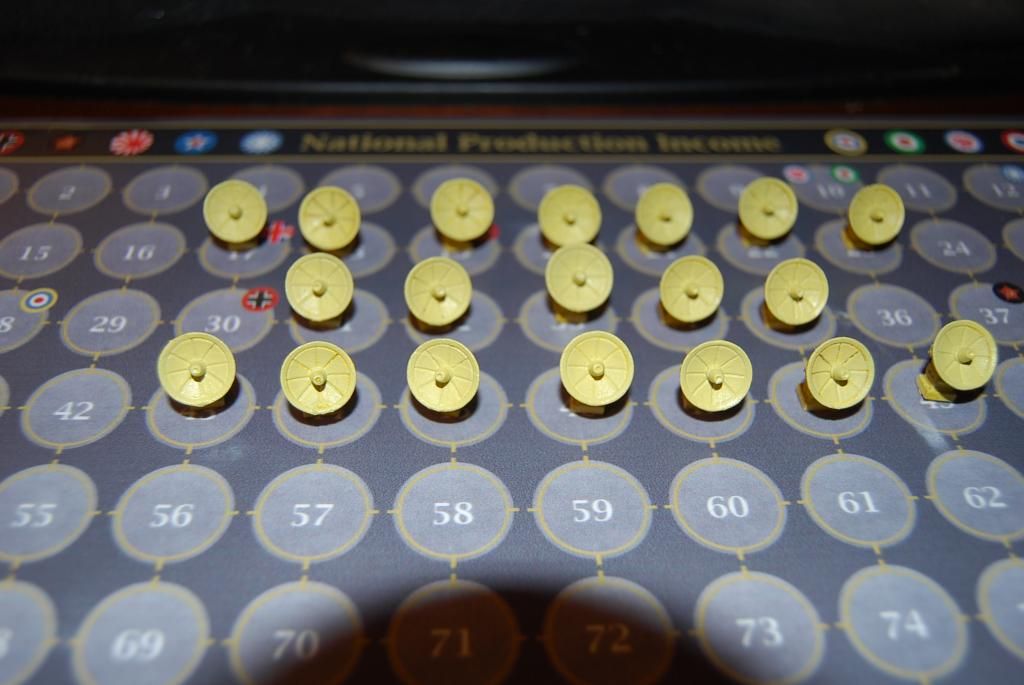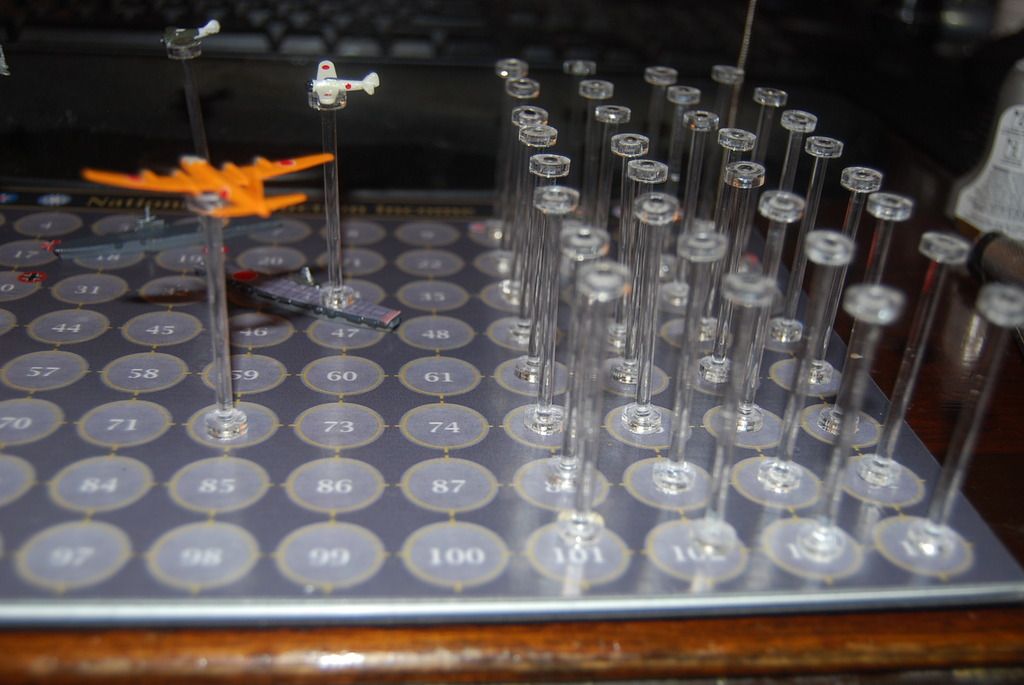Greetings Ladies and Gentlemen! Here’s some house rules I have been working on for a few months. I focus on a new victory objective, supply rules, custom unit rules, and a complete guide to setting up partisan warfare. Tell me what you think and post in the comments.
The partisan rules are modified from this great blog, AxisandAllies1940.
This was originally a Google doc, so the format is a little messed up, but here it is:
These rules are meant to amend or replace the existing rules of Global 1940: A3. As a rule of thumb, if there is a rule that directly refers to the same gameplay actions as the ones described in the book, this rulebook overrides those in the official rules. If there are additional rules in the original rulebook describing rules not covered in this book, use them in addition to these rules here.
Throughout the rulebook, the number that each unit hits on is written as number/number. This is to differentiate between d6 combat and d12 combat. Refer to the first number for d6 combat, and the second number for d12 combat.
Supply: In this unit, players must choose carefully which tiles are in supply. Each supply token costs 1 IPCs, and completely supplies all units within its tile. Once bought, the supply token can be placed anywhere on the map that draws a direct line through land or sea tiles back to closest victory city. If the supply line is cut, and no new line can be drawn, the unit is out supplies and cannot move or attack. The supply token is returned to the tray. If the unit loses its supply token, and a new line can be drawn once again, then the player must buy a new supply token to supply his troops. Once supplied the units are now considered supplied. Enemy units can capture unguarded supply tokens, and from captured territories.
Modified Victory Condition Rules: If the Allied players agree to the rule before the game starts, the Allied players may not necessarily be on the same side. During the game, the Allied players will be split into three sides, the UK and her Commonwealths(ANZAC/FEC), the US, and the Soviets. For every victory city liberated and held for one turn, that one side who captured the city earns one Victory point. For every enemy capital captured, Berlin or Tokyo, will be awarded three Victory points. If the allies win, one or multiple sides may claim complete victory. Allied nations may not attack each other.
If the entire Allied team wishes to win together, they may choose to not activate this rule.
Turn Phases
Partisan movements/actions
Partisan turn order: When you enter the partisan turn phase, players with active partisan units may play their partisans in the order the countries would normally would commit their turns. Germany starts, followed by the USSR, and so on.
In the game, there are multiple units that have specific rules that give the edges in combat. The rule is as such: roll the specific unit separate from the rest of the group. If the unit’s roll reaches the minimum indicated number, then the player who rolled for that unit may choose which enemy unit is hit, rather than the enemy player choosing for themselves.
For example, a tactical bomber succeeds in rolling the minimum number for its special rule. It rolls a 1, and it needed a one to successfully invoke the rule. Now the player who rolled may now select which enemy unit is hit by the tactical bomber. If the tactical bomber rolled a 2 instead of a 1, the tactical bomber would hit like normal and would not be allowed to choose its target as if it had hit on a 1.
NAVAL UNITS
Battleship
Atk: 5/10**
Def: 4/8
Mov:(Com 2)(NonCom 2)**
Cost: 24
Special Rules:
“Warm Up”
For the first round of combat, this unit hits on a 4/7 instead of the usual 5/10.
Carrier
Atk: 1/3
Def: 2/5
Mov:(Mov 2)(NonCom 2)**
Cost: 17
Special Rules:
Heavy Carrier
Atk: 2/3
Def: 3/6
Mov: (Com 2)(NonCom 2)**
Cost: 20
Special Rules:
“Mobile Airport”
This unit may hold and launch three fighters/tactical bombers, or a single strategic bomber. This units also acts as an airport for all movement means, and grants the normal bonuses to departing aircraft just as a typical airport would. The airport is destroyed when the carrier is destroyed.
LAND UNITS
Paratrooper
Atk: 2/3**
Def: 3/3
Mov:(Com 1)(NonCom 1)
Cost: 4
Special Rules:
“Parachutes Away!”
This unit may be loaded/unloaded from a transport plane. The movement off or on a transport plane counts as one movement. This unit may be dropped over a hostile or a friendly territory. In the case that the transport is destroyed before deploying the paratroopers, the paratroopers aboard are also removed from the game.
Partisan:
Atk: 1/2
Def: 1/2
Mov:(Com 1)(NonCom 1)
Cost: 2
Rules:
This unit may not be built if the capital is captured.
This may attack, defend, and move like normal like any other units during the Partisan phase
(Only use if you are using the supply rule) Does not require supply to attack
There may only be 7 partisan units per player in the game at a time, and never can the player exceed 7 partisan units
Partisan units can be upgraded to regular Infantry units for one IPC… The new infantry unit loses all qualities of a partisan unit and becomes a typical infantry unit.
Special Rules:
“For Freedom!”
Roll a d12:
If a 1-9:
The targeted radicals successfully becomes a partisan unit, with the corresponding stats and abilities.
If a 10-12:
The population fails to organize, and the partisan unit is not formed. You lose the 2 IPCs spent.
If the partisan unit was created, roll a d12
If the partisan is created by an Axis Player:
If a 1-9:
The partisan is a Nationalist, and is controlled by the country who created it
If a 10-11:
The partisan is an Anti-Occupation Partisan.
If a 12:
Failure! The enemy has seized the supplies and formed a partisan unit of their own
If the partisan is created by an Allied Player
If a 1-7:
The partisan is a Nationalist Partisan, and is under the control of the country who made it
If a 7-11:
The partisan is an Anti-Occupation Partisan
If a 12:
Failure! The enemy has seized the supplies and formed a partisan unit of their own
If the partisan is created by the Soviet Player
If a 1-8:
The partisan is a Soviet Partisan
If a 9-11:
The partisan is an Anti-Occupation
If a 12:
Failure! The enemy has seized the supplies and formed a partisan unit of their own.
You may choose either the standard rules for placing a partisan, or the simplified rules:
STANDARD RULES:
Now place the partisan in a territory of your choice. If you are producing a partisan in:
territory you originally controlled, but is now under the control of hostile forces, subtract 3 to your “For Freedom!” roll
territory that an ally originally controlled, but is now under the control of hostile forces, subtract 2 to your “For Freedom!” roll
territory that you or your ally controlled, but is now in the hands of your ally or yourself respectively, subtract 1 to your “For Freedom!” roll
territory that you currently control, but is was originally under the control of an enemy, add 2 to your “For Freedom” roll
territory that an enemy controls, but was always under enemy control, subtract 3 to your “For Freedom” roll
Additionally, if you are producing a partisan in:
territory that is three tiles away from your capital or more, add one from your “For Freedom!” roll
territory that is ten tiles away from your capital or more, add two from your “For Freedom!” roll
SIMPLIFIED PARTISAN PLACEMENT RULES
You may place partisans in any territory within ten tiles of your capital.
Special Rules Cont.
“Ambush!”
Partisan units may initiate ambushes against enemy troops within the same tile. They attack at a 1/2, and if they hit, one enemy unit is immediately removed from play. The surviving defending troops may return fire, and casualties are taken. The partisan player may retreat after one turn of combat without incurring any penalties, or may continue to fight, The instant hit ability only lasts the first turn. If a territory is conquered, any surviving partisan units turn into infantry units immediately for no cost, and lose all partisan attributes.
“Viva la Resistance!”
This unit may complete a number of actions during it’s combat move. You must roll higher than the number given to succeed on the action.
D12
Infrastructure Damage
3
Partisans make a strategic attack on a local factory, naval port, airport, or anti-aircraft gun. Success causes 1 IPC value if a 2 or 3 was rolled. If a 1 was rolled, the target takes 2 IPCs of damage. If the target was an anti-aircraft gun and it succeeds, the AA gun is automatically destroyed…
Combat Support
7
After a successful roll, partisans assist invading forces, so each successful partisan may be taken as a casualty instead of a friendly unit. This only occurs when combat is initiated between friendly forces and enemy forces within the same territory that the partisans currently reside in, or in an adjacent territory where combat is also taking place. Successful partisans may choose when and what unit they sacrifice for. A player with partisans who have successfully rolled for Combat Support may refuse to grant combat support to a battle for any reason.
Receive Supplies
4
Partisans attempt to procure supplies from local resources. If successful, a supply token is immediately placed in that tile. The partisan unit or other units in that tile may then use that supply token, or send it back to the capital, where it can be used that turn to supply new troops before the combat move of the country’s turn.
Recruit
3
For every successful usage of this action, one additional partisan unit is created for free, in the same tile or in an adjacent tile. Partisan unit numbers may not exceed the pre-established maximum of 7 partisan units.
If you have made a supply run in the same turn that the partisan unit plans to make an action, then -2 to their action roll.
Tank Destroyer
Atk: 3/5**
Def:
JAPANESE SPECIAL RULES
Banzai Charge: Twice per turn, the Japanese player may indicate they wish to start a banzai charge. The Japanese player chooses the territory or territories he wishes to attack with. They must have infantry in the territory they choose.
The player can choose however many of their infantry(infantry, SNLF, paratroopers, elite, veteran) to commit to a banzai charge. The charging units may not retreat.
Before the first round of combat, separate the banzai infantry and the normal attacking troops. Once done, the defending player rolls first. For any hits that the defending player scored the Japanese player removes one unit. If the unit chosen is an infantry that was committed to participate in the banzai charge, remove it immediately. If the piece chosen was not part of the banzai charge, set it aside.
Once all defending troops have fired, and the Japanese player has appropriately removed or set aside his troops, the Japanese banzai troops will now attack. All committed banzai infantry, except for those destroyed earlier by defending fire, attack the defending troops at a -1 to their die result, so a roll of a 3 by a normal infantry would hit. For every successful attacking hit, remove one defending casualty.
After every banzai unit has attacked, and the defending player has removed her casualties, proceed with the attacks from the non-banzai units. All attacking units not part of the banzai charge may operate normally, just as they would have done in a typical situation. Any defending casualties are removed from play.
At the start of the second round, if any troops still survive, there are no additional bonuses.
Artillery may not support any charging Japanese banzai troops
Example: Four Japanese infantry and an artillery from Burma attack two British infantry in India. The Japanese player declares a banzai attack, using all 4 of his infantry. The British player fires first, and rolls for her two. She rolls a 1/4, and one of the British infantry hit. The Japanese player selected one of the infantry in the banzai charge, so that unit is removed from play immediately. The 3 surviving charging Japanese infantry then attack. The two Japanese units roll a 1/2/5 The Japanese player scores two hits on the rolls of the 1 and 2, because banzai units roll at a -1 to their die result, and the British player removes her two infantry. The artillery does not attack because there are no remaining targets, but if there were any surviving units left, the Japanese player would roll normally, and the British player would remove hits as normal. The Japanese player could have selected the artillery as his one casualty of the combat. The Japanese player ends his attack by controlling India with three infantry and one artillery, and uses one of two total banzai charges.
SOVIET RUSSIA SPECIAL RULES
Soviet Pride: This rule has three phases. One applies to partisan units, and the other applies to infantry conscription.
Phase 1 (Soviet People’s Partisans): Five partisan units may be bought for 3 IPCs, and be placed in any original Soviet territories, regardless of the occupation. The player must successfully roll the result of a 5 or lower to place each of the units. These units may also be placed on the following territories: Poland, Finland, Romania, Northwest Persia.
Phase 2 (Grand Soviet Conscription): For every five infantry bought by the Soviet,the player receives a free infantry unit. The free infantry unit must be placed in Russia.
Phase 3 (The People’s Army): The Russian player may place infantry in any original Soviet, currently Soviet controlled, territory with an IPC value of 3 or higher.
AMERICA RULES
The Sleeping Giant: This rule works in two phases. One applies to unit creation, and the other is an optional rule.
Phase 1: This rule is designed to work independent of the optional rule.
During the American player’s





